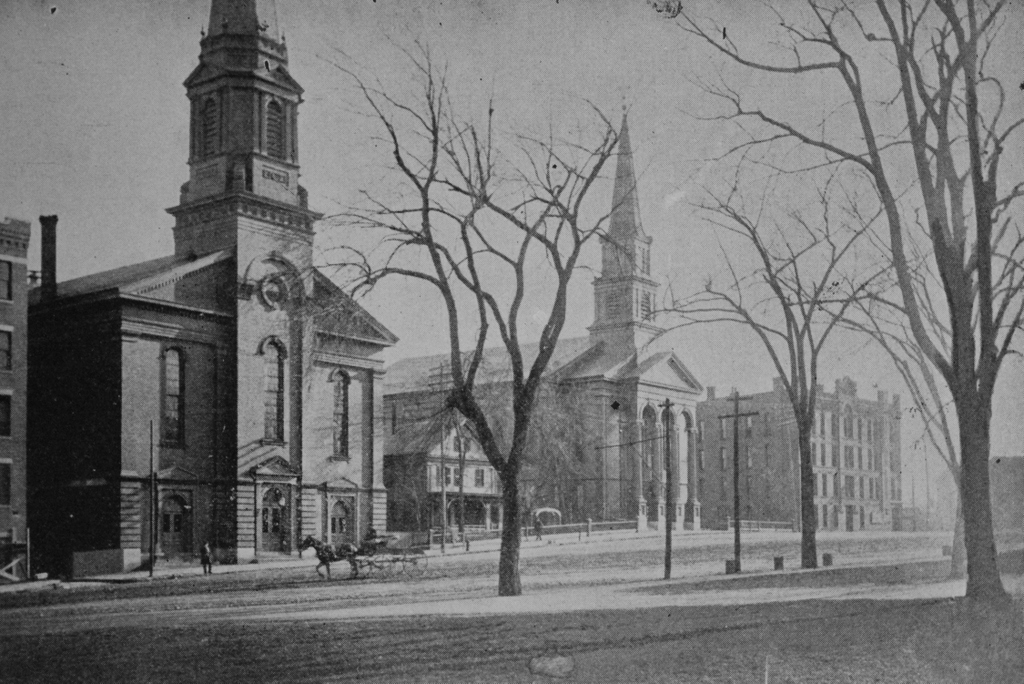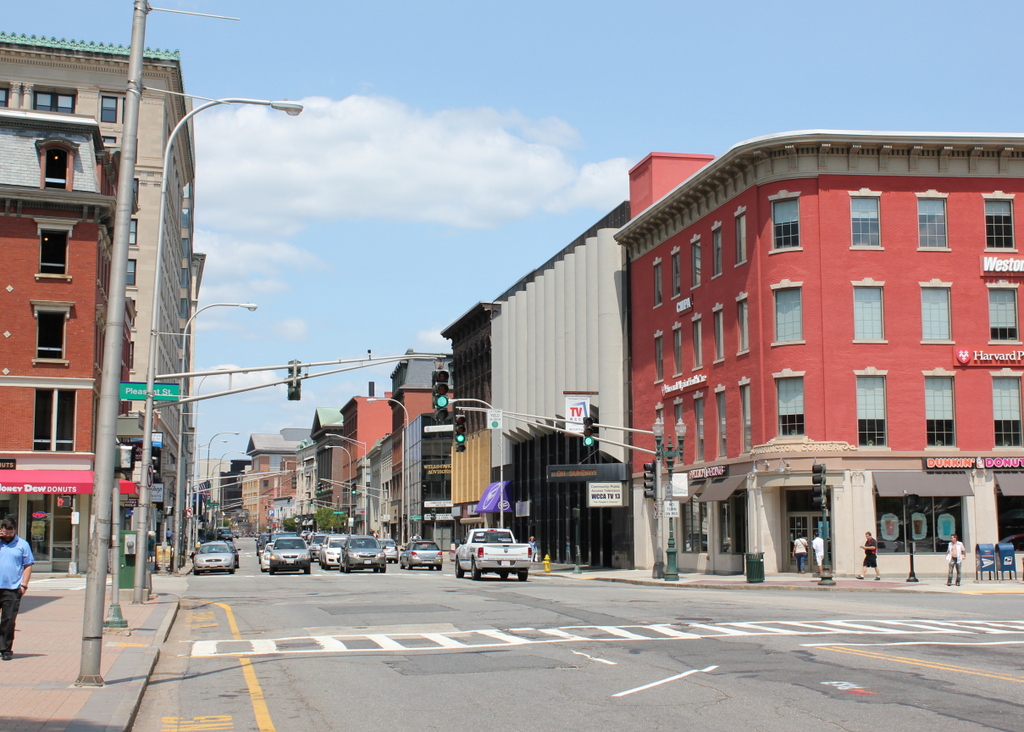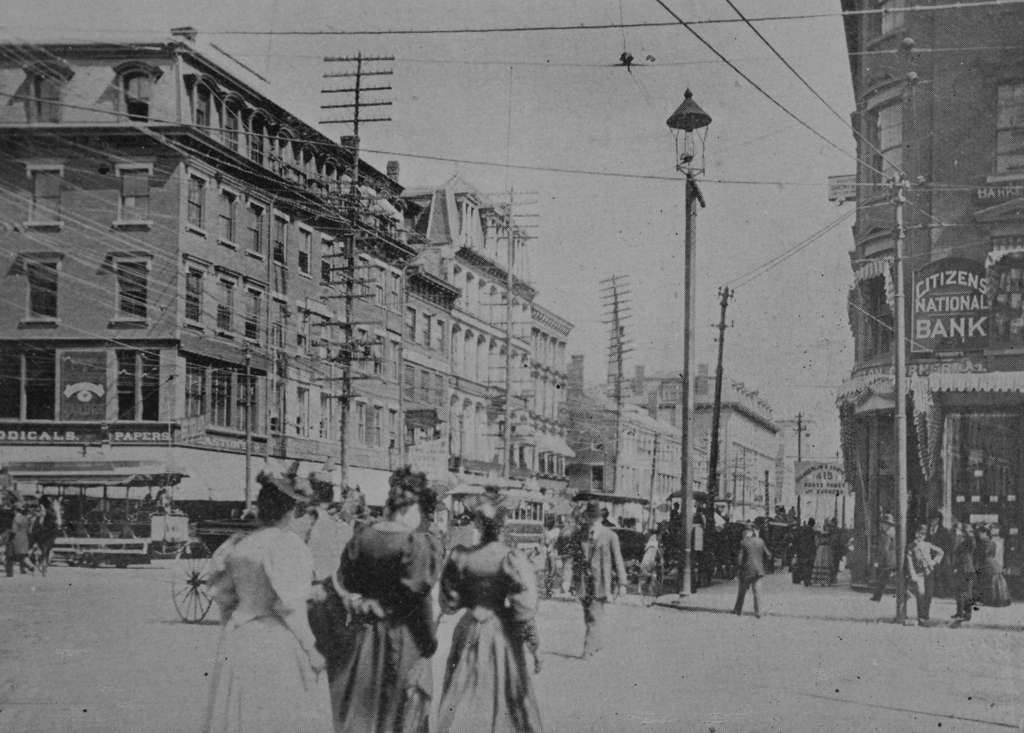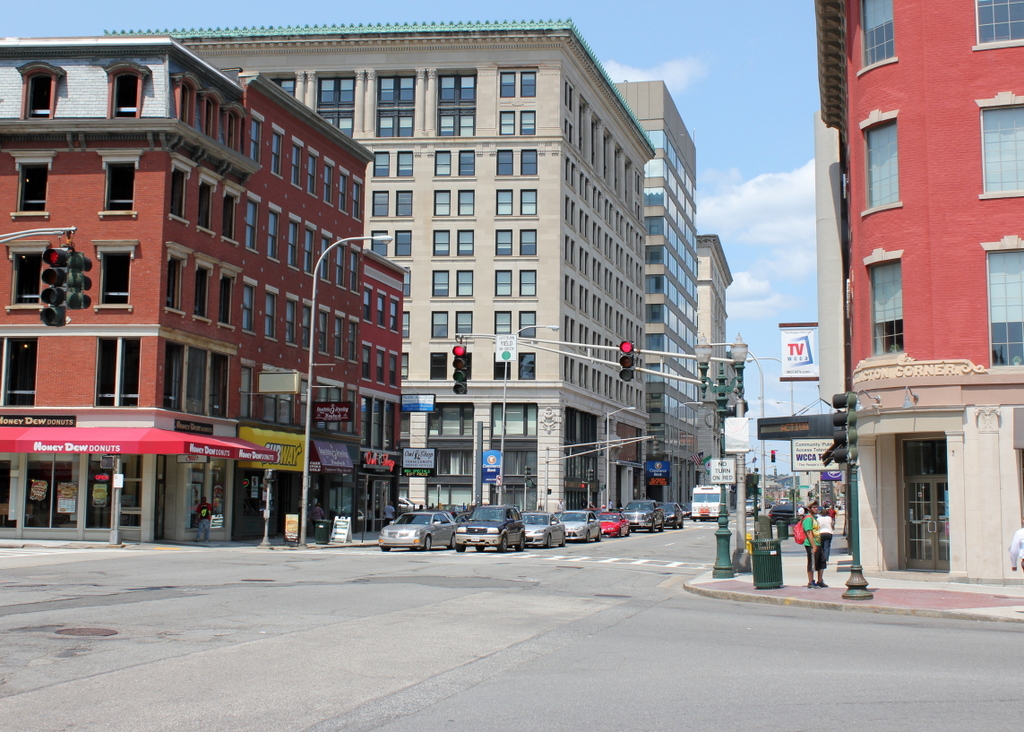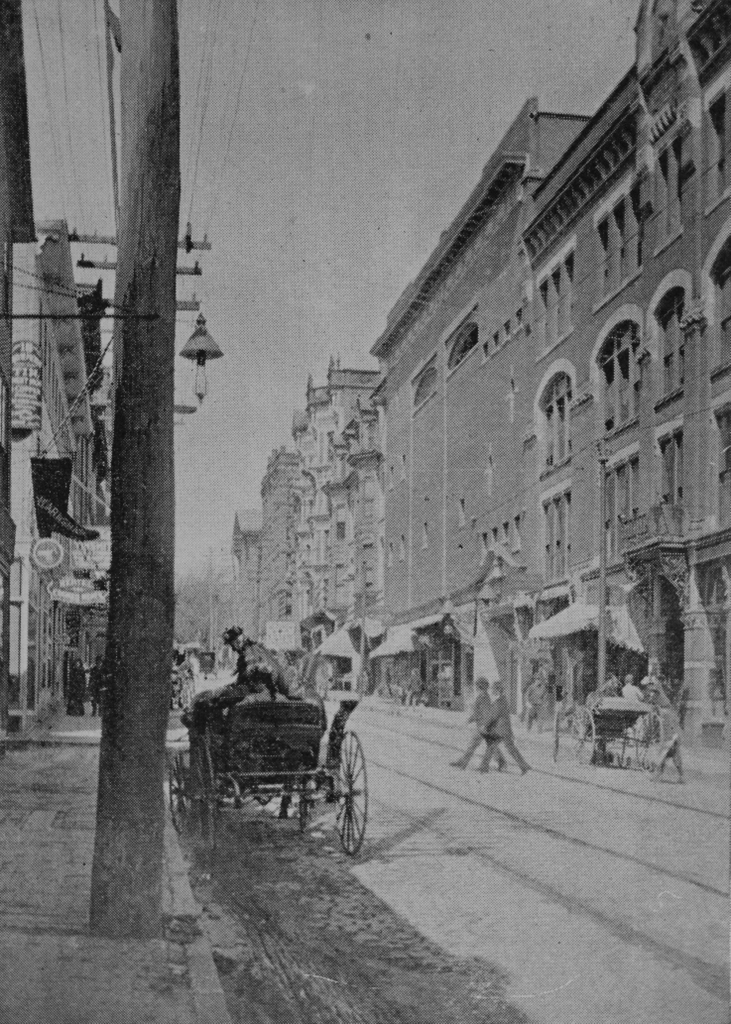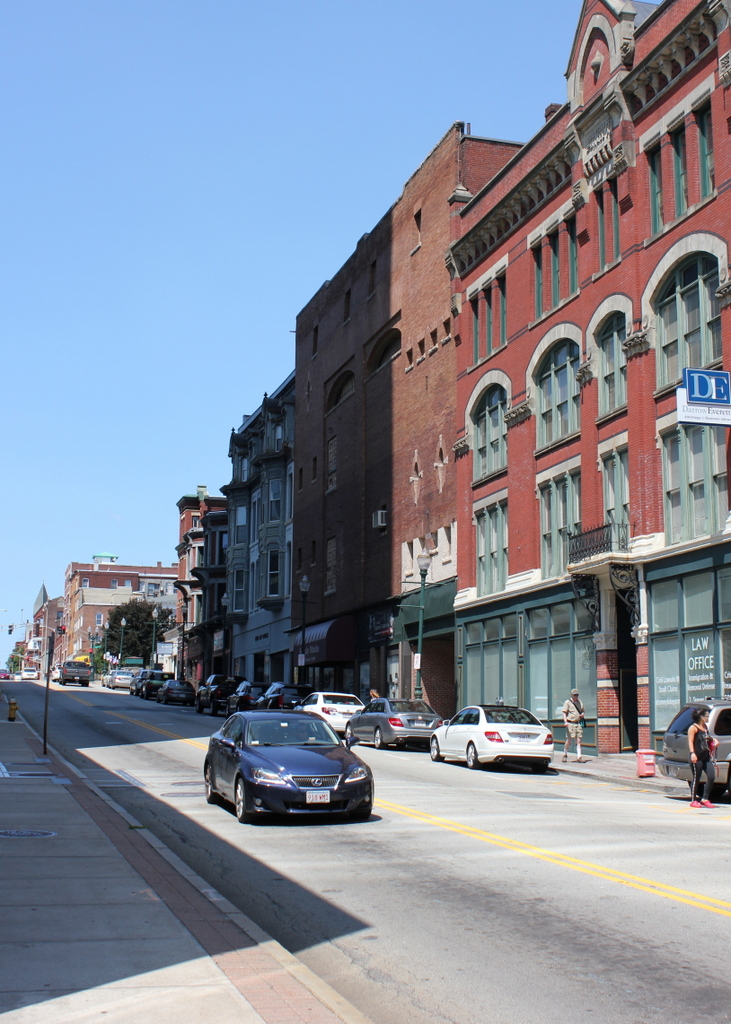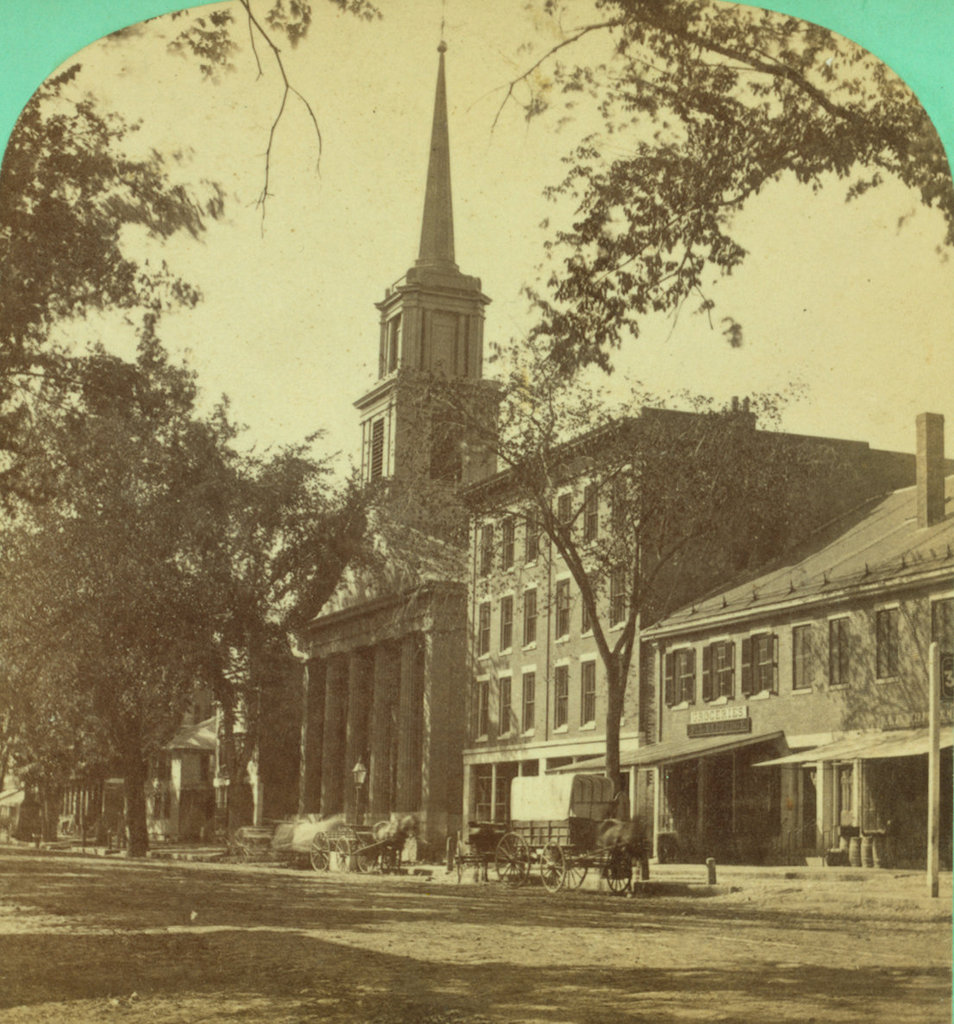The churches of Salem Square in Worcester, around 1895. Image from Picturesque Worcester (1895).
The scene in 2016:
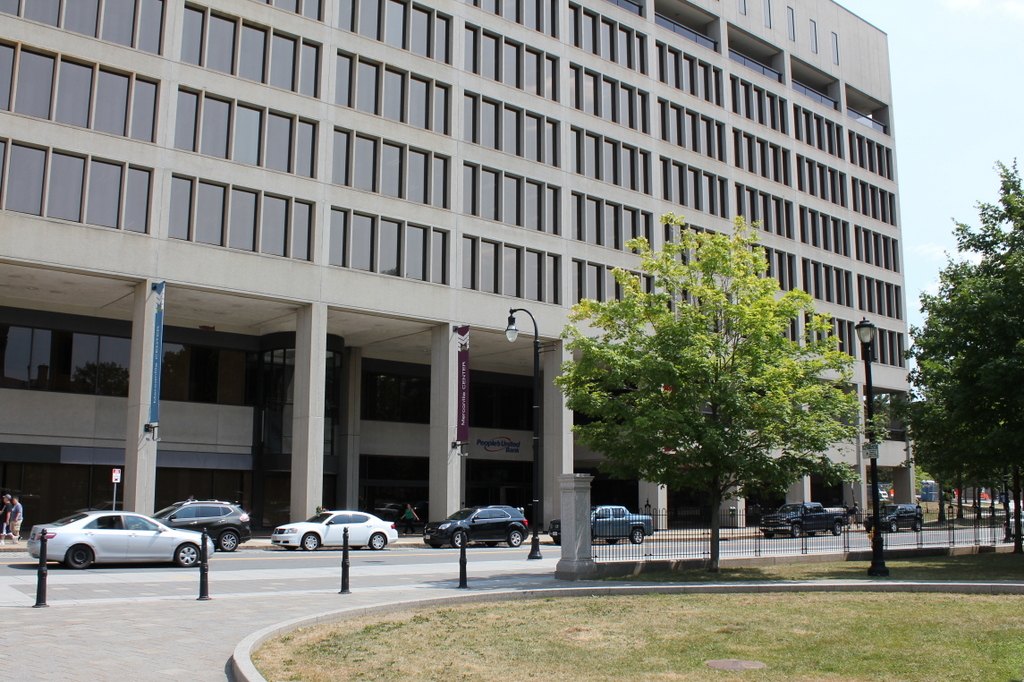
Taken from nearly the same spot as the photos of the previous post, this scene shows Salem Square, a roughly triangular-shaped plaza on the east side of the Worcester Common. On the other side of this square were two churches, with the Salem Square Congregational Church on the left and the First Baptist Church on the right. As mentioned in the previous post, this Congregational church was established in 1848, and the building was probably completed soon after. The Baptist church was slightly older, dating back to the 1830s when it replaced an earlier meeting house which had burned on the same site.
In 1902, the Baptists sold their building to the Catholic church, and it became the Notre Dame Church. In the late 1920s, the old building was demolished to build the present Notre Dame Church on the same site. The other buildings in the first photo have also since been demolished, and by the early 1970s the entire area here was redeveloped as the Worcester Center urban renewal project. Part of this project included eliminating most of Salem Square itself, replacing the plaza with the office building that is seen here now. It hides the view of the 1929 Notre Dame Church, which survived the Worcester Center construction but, as of 2016, is scheduled to be demolished soon as part of the CitySquare redevelopment project.

